-
Caring for Your Eyes When You Have Diabetes
Regularly seeing an eye doctor is important for everyone, but even more so for people with diabetes. Read on to learn why you should regularly see your ophthalmologist near Chicago and what else you can do to practice good eye care when you have diabetes.
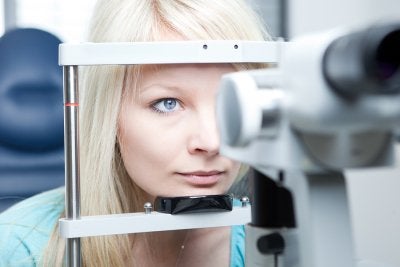
Control Your Blood Sugar
Diabetes is a condition that is characterized by high blood sugar and problems with blood sugar regulation. When there is too much glucose in your blood, this can cause damage to your body, which includes the tissues of your eyes. For this reason, maintaining healthy blood sugar levels is an important part of protecting your vision when you have diabetes. Doing this can help protect the blood vessels in your eyes and slow the progression of eye diseases. See your doctor at least twice per year for an A1C blood test, which measures what your blood glucose levels were for 2 or 3 months prior.
Manage Your Blood Pressure
High blood pressure can also be a contributing factor when it comes to diabetes and eye health. To help slow and prevent eye diseases that can be caused by diabetes, maintain healthy blood pressure levels by moderating your sodium intake, exercising, and staying at a healthy weight. If these practices aren’t enough to keep your blood pressure levels healthy, then ask your doctor about medications that help regulate blood pressure. To practice good eye care, aim for blood pressure that is under 140/80.
Visit Your Eye Doctor
Annual eye exams give your eye doctor a chance to catch the early signs of eye disease, something that is particularly important for people with diabetes. Many diabetics develop an eye problem called diabetic retinopathy, a condition that is a complication of diabetes and that can lead to blindness if left untreated. The early stages of this eye disease typically cause no symptoms, so seeing your doctor at least once per year for a comprehensive dilated eye exam is critical for protecting your eyes when you have diabetes.
-
Comparing Cataract and ICL Surgery
Are you exploring your options for vision correction near Chicago? If so, then your eye doctor may recommend cataract or ICL surgery. A cataract is a cloudy area on the lens of the eye, and cataract surgery involves the removal of the eye’s natural lens after it becomes clouded by a cataract. An intraocular implant (IOL) can then be placed where the natural lens once sat. For patients where the use of an IOL is not possible, eyeglasses or contact lenses must be worn to focus light coming into the eye following cataract surgery.
On the other hand, some people experience poor vision due to refractive errors, meaning that they struggle to see things that are near, far, or both. Contact lenses and eyeglasses are traditionally used to correct these vision problems, but Visian ICL surgery offers another solution. Unlike cataract surgery, which requires the removal of the eye’s lens, Visian ICL surgery involves the placement of an IOL in front of the patient’s natural lens so that the 2 lenses can work together to correct the person’s refractive errors. Speak with your eye doctor to learn if cataract of Visian ICL surgery could be right for you.
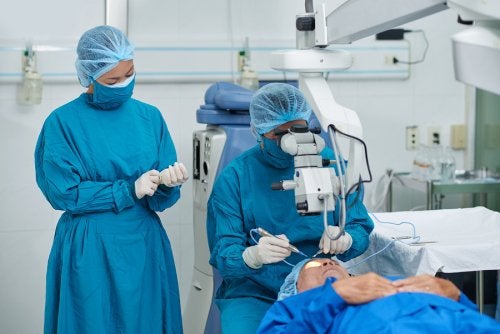
-
Tips for Avoiding Household Eye Injuries
When it comes to practicing good eye care in Chicago , this means more than just visiting your optical center for regular exams with you eye doctor. Caring for your eyes involves taking certain precautions when necessary to help protect your vision, and this includes when you are at home. There are several things that you can do to help avoid household eye injuries.
If you ever use hazardous chemicals or products around the house, then eye doctors recommend that you protect your eyes from injury by wearing protective eye gear. Also, if you ever work with power or hand tools, bungee cords and loads, lawn mowers, or hedge trimmers, then these are all situations in which you should be cautious about fragments injuring your eyes and in which you can benefit from using protective eyewear. Finally, take care in the kitchen while preparing anything with oil or hot liquids to prevent them from splattering and causing eye injuries.
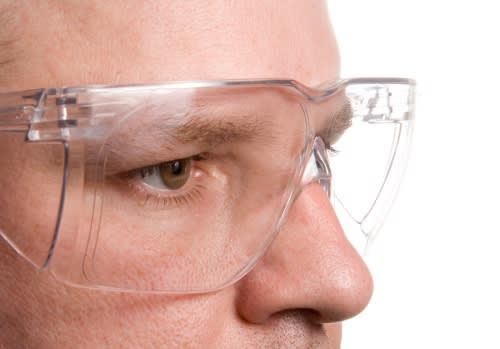
-
A Look at the Three Types of Glaucoma
Are you wondering if you need to see an eye doctor for vision correction in Chicago because of your deteriorating eyesight? If so, then you may benefit from knowing more about glaucoma, which refers to several eye diseases that affect the optic nerve. Continue reading to learn about the types of glaucoma.
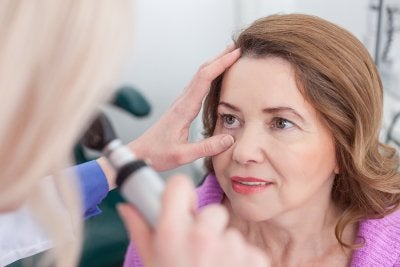
Open-Angle Glaucoma
The most common form of glaucoma in the United States and Canada, open-angle glaucoma (OAG) is characterized by worsening sight in both eyes that usually occurs slowly and even unnoticeably. In the case of OAG, the symptoms develop so slowly that it’s not uncommon for them to go unnoticed until the person’s vision is severely deteriorated. Often, this is because one eye can be more affected than the other and the one that’s in better condition makes up for the discrepancy. With open-angle glaucoma, peripheral eyesight tends to deteriorate before the central vision.
Closed-Angle Glaucoma
Less common in the United States and Canada than OAG and affecting only one eye, closed-angle glaucoma (CAG) can come on suddenly and can even result in a medical emergency. However, CAG symptoms can also be mild and can cause blurry vision that comes and goes and is short-term. When severe, the signs of CAG can include episodes of blurred vision that last for longer periods and can include pain that’s felt around or in the eye. Some other symptoms of closed-angle glaucoma include nausea, red eyes, and seeing colorful halos around lights. If you notice that your vision is suddenly blurry, see an ophthalmologist at an eye care center right away.
Congenital Glaucoma
Occurring in infants at birth and sometimes in children and young adults, congenital glaucoma is the rarest type of this eye disease. An individual suffering from this condition may have symptoms that include eyes that water a lot and are sensitive to the light. If a child has congenital glaucoma, you may notice that she often squints, closes her eyes, or rubs her eyes. If you notice these behaviors in your baby, she should be seen by an eye doctor as soon as possible.
-
Preventing Computer-Related Eyestrain
While regularly visiting your ophthalmologist near Chicago is an important part of your ongoing eye care, so is taking care of your vision while at work and home. If your vision gets blurry, your eyes burn, or your neck aches after sitting in front of your computer for a while, then you may be dealing with eyestrain. Watch this video to find out more about this common condition.
Referred to by eye doctors as computer vision syndrome, eyestrain that results from looking at a computer monitor is not an uncommon problem. Luckily, there are several steps that eye doctors recommend for preventing this issue. Your monitor should be 20 to 30 inches from your eyes, so adjusting it to be within this range may alleviate your symptoms. Also, ensure that the monitor is at eye level and that your lighting doesn’t create a glare on the screen.
-
A Look at the Different Types of Intraocular Lenses
Intraocular implants may be appropriate for some patients with cataracts or presbyopia. When you visit an optical center in Chicago to discuss having this type of eye surgery , the ophthalmologist will explain the different types of intraocular lenses (IOLs) that are available. One popular option is the monofocal lens, which is designed to provide optimal vision at near, intermediate, or far distances. If your monofocal lens is set for near distance, then you would need eye glasses to see at far distances. Another option is to set one lens for near and another for far distances. This is known as monovision and it provides vision at intermediate distances.
Alternatively, your ophthalmologist might recommend that you have multifocal or accommodative lenses. This is a newer type of IOLs that may reduce your dependence on glasses and contact lenses. A multifocal lens features a series of different focal zones, which can allow for both near and far distance vision.
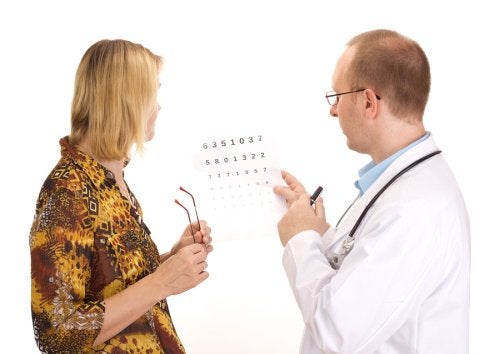
-
The Importance of Glaucoma Screening at Age 40
Glaucoma refers to a cluster of eye diseases that inflict damage on the optic nerve, resulting in vision loss and perhaps blindness. Glaucoma is typically characterized by increased intraocular pressure, which can occur when fluid accumulates within the eye instead of being drained away. The optic nerve can sustain damage when this pressure builds up. Although glaucoma is a serious eye disease, the good news is that your ophthalmologist can detect it early and recommend effective treatment options to manage the problem. You can facilitate early detection of glaucoma by scheduling a screening at an optical center in Chicago.
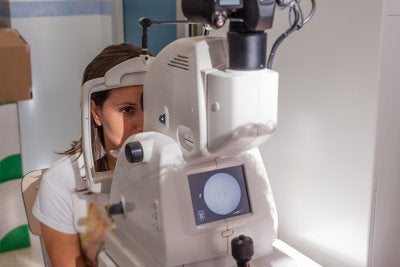
Why You Should Get Screened
Many adults resist going to an ophthalmologist for an eye exam because they think that their vision is fine or that their prescription hasn’t changed. But in fact, eye diseases can develop without causing noticeable symptoms. Only a comprehensive eye exam at an optical center can lead to an accurate diagnosis. Taking an hour or so out of your day to undergo a glaucoma screening is a worthwhile investment in your health. Another important reason why you should get screened is that when left untreated, glaucoma can gradually rob you of your eyesight. When detected and treated early on, glaucoma is quite manageable.
When You Should Get Screened
The reason why it’s important to get screened at age 40 is because this is the time of life when eye diseases and other problems typically begin to develop. Even if your vision appears to be perfect, you could be developing asymptomatic problems like glaucoma. Your ophthalmologist will recommend a glaucoma screening schedule for you to follow. Generally, it’s recommended that patients ages 40 through 54 have a screening every one to three years. Those who are 54 to 64 should have one every one to two years and those who are older than 64 should have one every six to 12 months. Your ophthalmologist may adjust this schedule depending on your specific risk factors of glaucoma.
What Your Risk Factors Might Be
Ask your ophthalmologist if you’re at an increased risk of glaucoma. You may be if you have a family history of the disease, you’re age 40 or older, you have high intraocular pressure, or you are farsighted. People with diabetes, high blood pressure, a history of eye injuries, and a history of corticosteroid use are also at an increased risk.
-
What to Know About Age-Related Macular Degeneration
Age-related macular degeneration (AMD) is one of the most common causes of vision loss in Americans over 50 years of age and is frequently treated by eye doctors in Chicago. If you’ve been diagnosed with this condition or think that you may be at risk, read on to learn more about AMD.
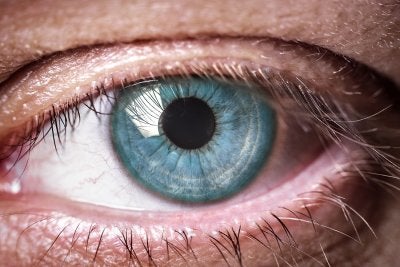
Types of AMD
Age-related macular degeneration affects the macula, which is at the back of the eye in the center of the retina. AMD can cause slow or rapid vision loss but rarely leads to total blindness. Dry AMD usually progresses slowly and is the most common form of this condition. This type of AMD stops the flow of nutrients to the cells in the macula which process light, resulting in cell death. Wet AMD tends to progress quickly and results in more serious vision loss. With this type of AMD, abnormal blood cells grow beneath the retina and break open, resulting in vision impairment.
Symptoms of AMD
It’s possible for the signs of AMD to manifest only once the disease has progressed. AMD sufferers can experience symptoms that include difficulty seeing in low light, seeing straight lines as blurry or wavy, trouble seeing in the center of vision, and changes in the appearance of colors. Visit an eye care specialist if you experience any of these symptoms.
Treatment for AMD
For patients diagnosed with dry AMD, vitamin supplementation is the current form of treatment. Research has shown that in certain combinations, vitamins can slow AMD’s progression in some patients. Treatment for wet AMD focuses on preventing the growth and decreasing the leakage from the abnormal blood vessels. Laser procedures are sometimes used, but anti-vascular endothelial growth factor drugs are the standard treatment. These medications are injected into the eye by an ophthalmologist. The eye is numbed beforehand, and the injections must be administered several times over the period of treatment. Your eye doctor may also recommend that you speak with your primary care physician about developing an exercise plan and making dietary changes that support a healthy lifestyle.
-
Relieving Computer Eye Strain
Looking for an optician in Chicago to relieve your computer eye strain? Computer eye strain is becoming a common problem, as technology has found its way into our personal and professional lives. Fortunately, there are some measures your eye doctor may recommend to prevent eye strain while using the computer.
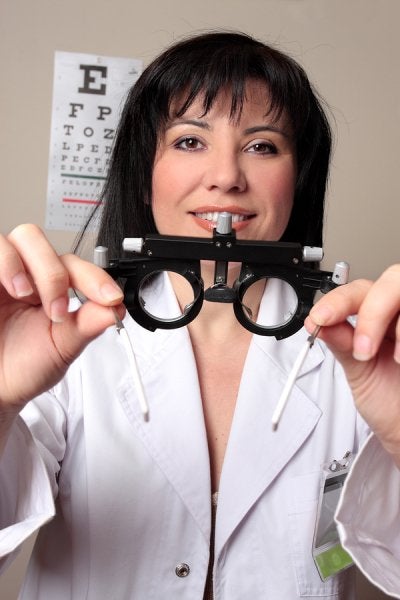
1. Have your eyes examined.
In order to prevent or treat vision problems, the first and most important thing you should do is visit your ophthalmologist for a yearly eye exam. He or she will be able to notify you of any current problems and test your eyes at a specific working distance. That way, you’ll have a better idea of how to prevent future eye strain.
2. Get an upgrade.
Is your computer basically a retro novelty item? It might be time for an upgrade. Flat screen LCD displays, such as those you see on modern laptops, are so much easier on the eyes than old tube-style monitors because they have a higher resolution and don’t cause images to flicker. If possible, go ahead and choose a large display—doing so will make computer time a more comfortable experience for your eyes.
3. Ask for computer eye glasses.
Your local optical center can provide you with a special prescription for computer eye glasses. This is a great choice for those whose current eyewear is uncomfortable after an extended time behind the screen. For example, those who wear contact lenses may often note that they become dry and irritating after computer work. In addition, bifocals or progressive lenses are not optimal for computer usage; computer glasses may be a better choice during screen time.
4. Take mini-breaks.
It’s important to give your eyes—and your neck, back, and shoulders—several breaks throughout the workday if you spend most of your time at the computer. There’s no need to worry that doing so will cause you to lose focus. Mini-breaks should actually increase your productivity and improve how you feel while you’re working. In addition, they reduce the risk that your eyes will “lock up” after prolonged digital screen usage.
-
Spotlight on Macular Degeneration
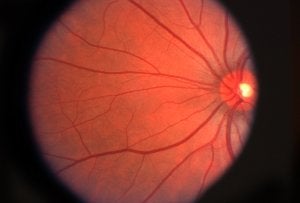 Macular degeneration is an eye condition that is caused by the retina deteriorating and vision becoming impaired. The condition can be diagnosed and treated by an eye doctor or ophthalmologist in Chicago . Symptoms include the distortion of lines or the center of vision, the appearance of dark, blurry areas in the center of vision, the white out of the center of vision, and diminished or distorted perception of color.
Macular degeneration is an eye condition that is caused by the retina deteriorating and vision becoming impaired. The condition can be diagnosed and treated by an eye doctor or ophthalmologist in Chicago . Symptoms include the distortion of lines or the center of vision, the appearance of dark, blurry areas in the center of vision, the white out of the center of vision, and diminished or distorted perception of color.If you experience any of these symptoms, see an eye doctor or ophthalmologist as soon as possible. There is no cure for the condition, but your eye doctor can offer several treatment options for macular degeneration. These include medication called anti-angiogenic drugs that are injected into the eyes, laser therapy or photodynamic laser therapy, and certain vitamins. Vitamins C, E, beta-carotene, zinc, and copper can sometimes decrease the risk of vision loss that is associated with macular degeneration.
If you’ve been diagnosed with macular degeneration, you can prevent the condition from getting worse by making some simple lifestyle choices. Eat a healthy diet that is rich in dark green, leafy vegetables. Eat fish, and other foods rich in omega-3 fatty acids, and limit your intake of saturated fats.
